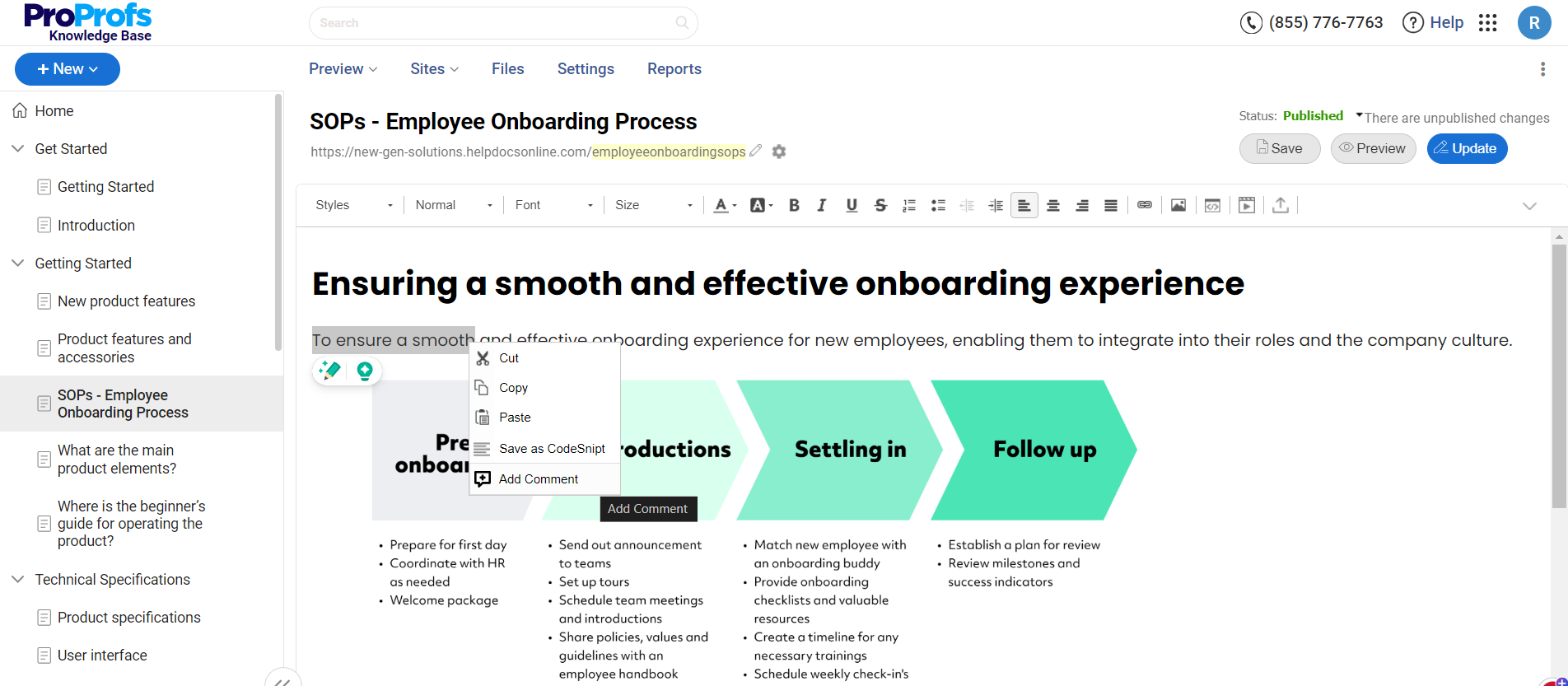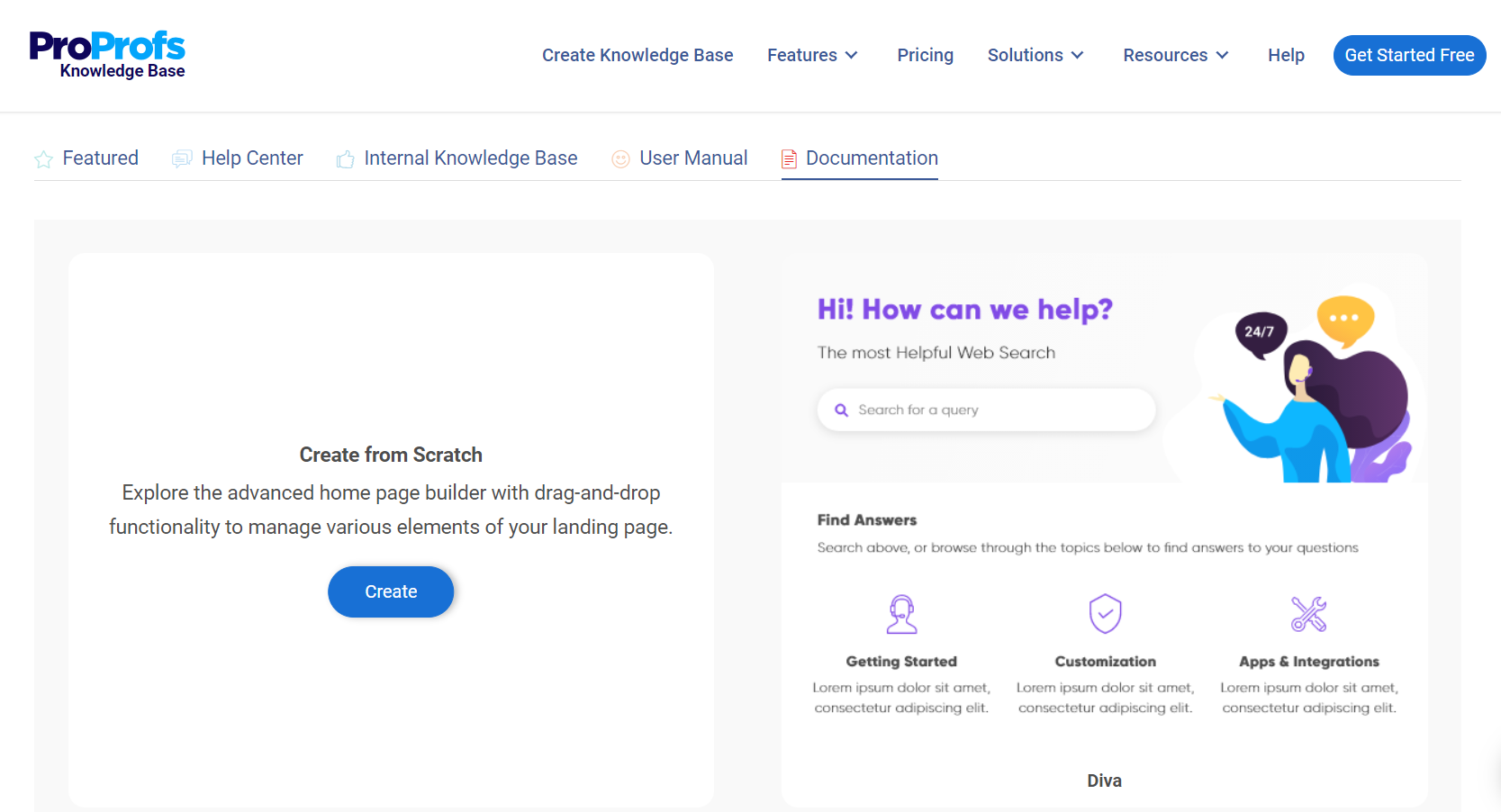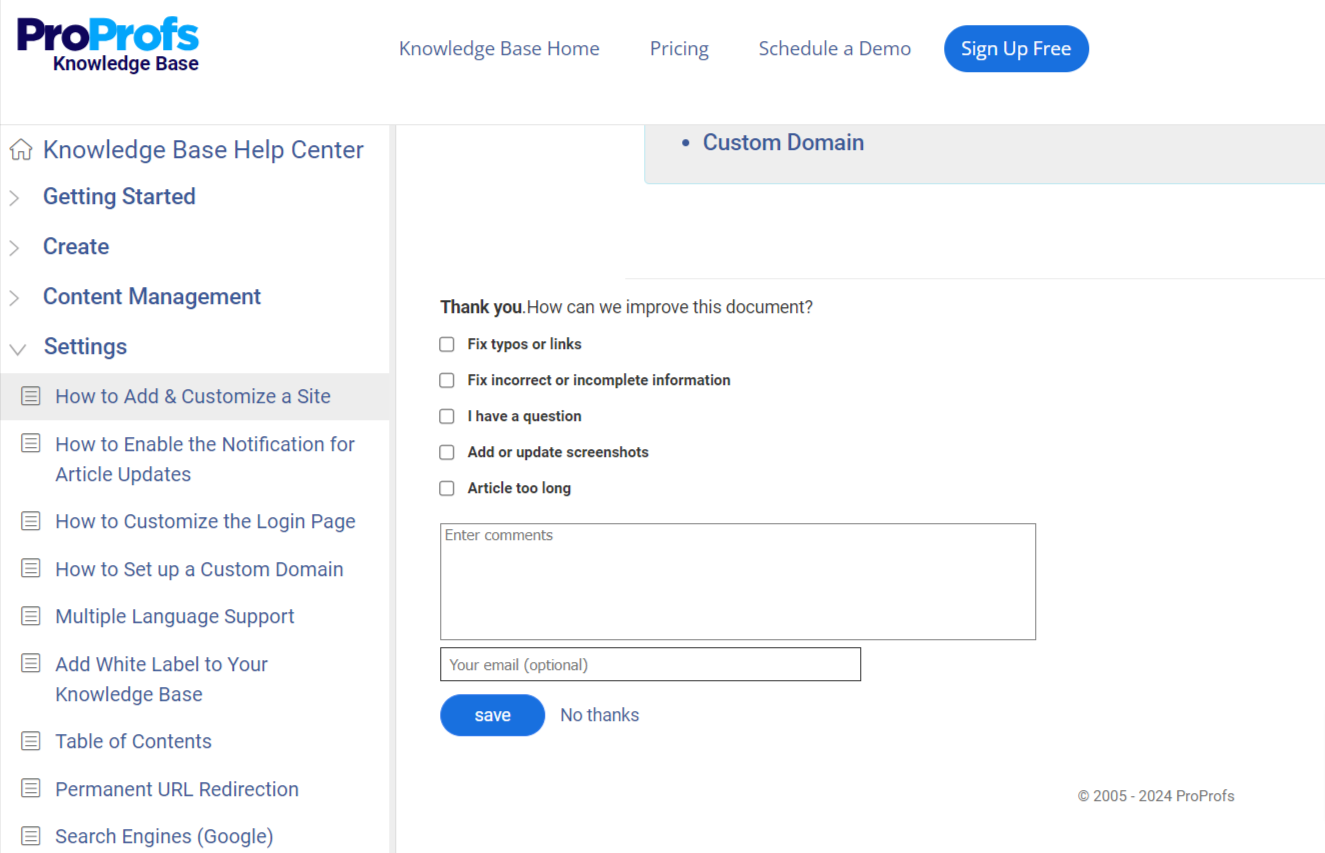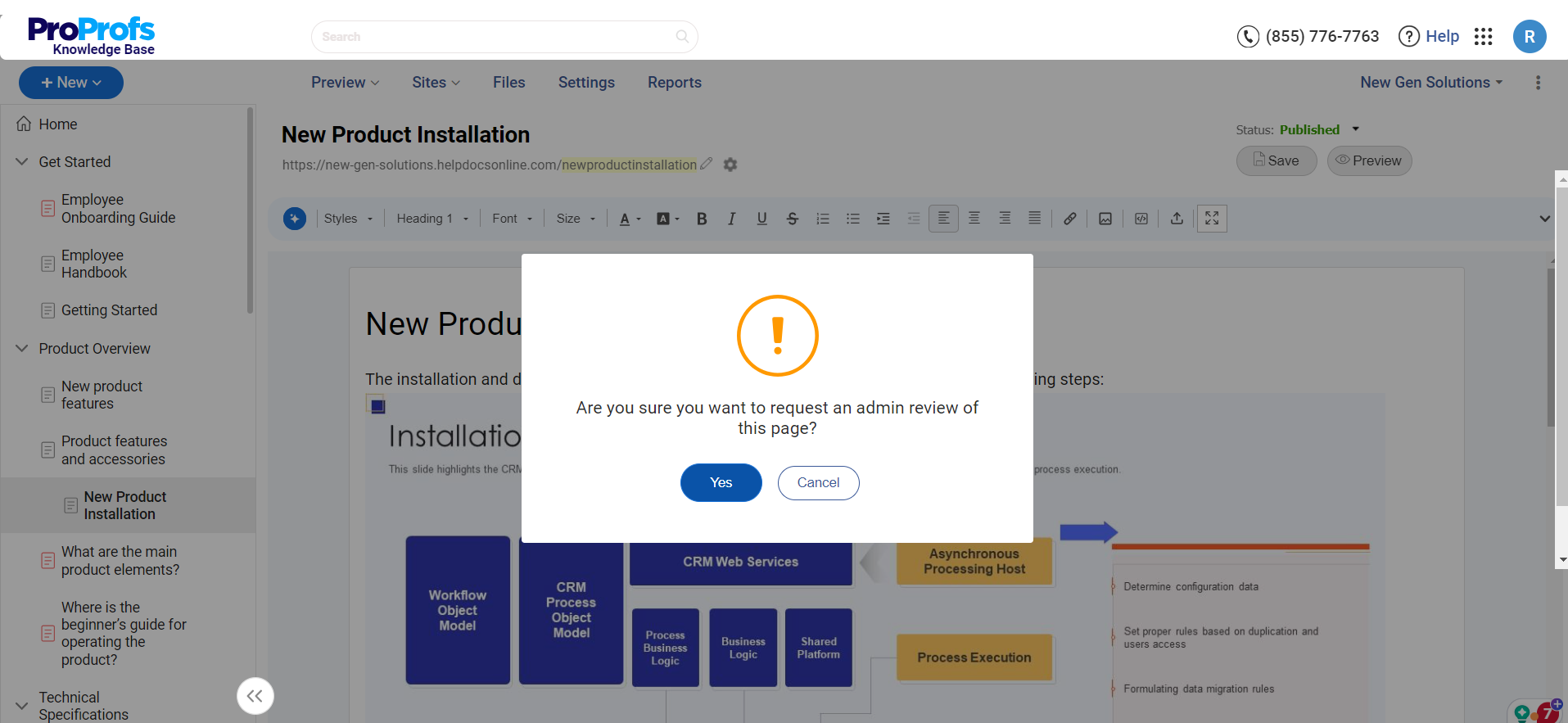Did you know that 55% of developers say the tools they use make their roles more complex?
Add to that the responsibility of keeping documentation up-to-date! Sounds like a mess, right?
Not if you leverage agile documentation, which mitigates this by promoting continuous updates and iterations, ensuring that the information remains relevant and useful throughout the software development lifecycle.
In this blog, we will delve deeper into the concept of agile documentation, exploring its importance, key elements, and practical steps to create it effectively.
What Is Agile Documentation?
Agile development documentation is the practice of creating and maintaining documentation in a flexible, iterative manner that aligns with Agile principles. Unlike conventional documentation methods, which often result in extensive and static documents, agile documentation is lean, timely, and continuously updated to reflect the project’s current state.
This approach ensures that documentation remains relevant, helpful, and minimal, supporting the Agile values of working software over comprehensive documentation and responding to change over following a plan.
For example, consider a software development team working on an Agile project. Instead of writing detailed requirements documents upfront, they create user stories in their backlog. These user stories are short, simple descriptions of a feature from the end user’s perspective.
A user story might be: “As a user, I want to reset my password so that I can access my account if I forget my password.” These stories are elaborated on during sprint planning and refined with acceptance criteria that specify what is needed for the story to be considered complete.
As the team progresses through sprints, they might add lightweight documentation like diagrams, API documentation, and usage instructions directly related to the developed features. This documentation is created just in time, ensuring that it is accurate and directly applicable to the current iteration of the project.
What Is Agile Development?
Agile development is a software development methodology that emphasizes flexibility, collaboration, and customer satisfaction. It originated from the Agile Manifesto in 2001 and promotes adaptive planning, evolutionary development, early delivery, and continuous improvement.
It encourages a disciplined project management process that allows for frequent inspection and adaptation of products. It aims to deliver small, functional pieces of software quickly and frequently, enabling teams to gather feedback and make necessary adjustments promptly.
It is characterized by its iterative and incremental process, where projects are divided into small, manageable units called iterations or sprints, typically lasting one to four weeks. Each sprint delivers a potentially shippable product increment, which allows teams to receive feedback and make necessary adjustments before proceeding to the next iteration.
What Is the Importance of Documentation in Agile Software Development?
Documentation in Agile software development helps maintain clarity, facilitate communication, and ensure the project’s success.
Despite its emphasis on working software over comprehensive documentation, well-maintained documentation remains vital for several reasons.
Provides a Reference
Firstly, documentation provides a reference that helps teams understand the project’s history, decisions, and reasons behind those decisions. This is essential for new team members who need to get up to speed quickly and for current members who need to recall past decisions.
It serves as a single source of truth that can prevent misunderstandings and miscommunications.
Enhances Collaboration & Communication

Secondly, effective documentation enhances collaboration and communication among team members and stakeholders. It ensures everyone is aligned and accesses the same information, facilitating smoother workflows.
Documentation also supports asynchronous communication, which is essential for distributed teams working across different time zones.
Aids in Maintaining the Product
Lastly, documentation aids in maintaining the product over its lifecycle. Well-documented code, processes, and decisions make troubleshooting issues, implementing new features, and performing updates easier.
It ensures that the product can be effectively managed and evolved, even when the original development team is no longer available.
What Are the Questions to Ask While Creating Agile Documentation?
Creating effective Agile methodology documentation requires thoughtful consideration of the project’s needs and the stakeholders involved. Here are some essential questions to ask during this process:
Who Is the Audience?
Understanding the primary users (developers, stakeholders, new team members, and customers) helps tailor the content to their needs. Different audiences may require different levels of detail and technicality.
What Is the Purpose?
Clarifying the purpose ensures the documentation is relevant and focused. Knowing the context in which it will be used helps determine its format and content.
What Information is Essential?
Identifying key elements (processes, decisions, code standards, user stories) ensures comprehensive coverage. Agile documentation should be concise and to the point.
How Will the Documentation Be Maintained?
Assigning ownership helps keep the documentation current. Regular updates ensure the documentation remains accurate and relevant.
What Tools & Formats Will Be Used?

Explore Documentation Templates
Choosing the right tools (wikis, collaborative platforms) facilitates easy access and editing. Selecting the right format (text, diagrams, videos) based on the content and audience enhances usability.
How Will Feedback be Incorporated?

Establishing a feedback mechanism helps improve the quality of the documentation. Version control systems ensure transparency and traceability of updates.
How Does it Align with Agile Principles?
Aligning with Agile principles means continuously improving the documentation. Ensuring it facilitates teamwork and effective communication is critical to Agile success.
FREE. All Features. FOREVER!
Try our Forever FREE account with all premium features!
What Are the Critical Elements to Include in Agile Documentation?
Creating effective Agile documentation involves including several critical elements that ensure clarity, relevance, and usability. These elements help maintain the Agile flexibility, collaboration, and continuous improvement principles.
User Stories
These are brief descriptions of features or functionalities from the end user’s perspective. They focus on the user’s needs and why, forming the foundation of Agile documentation. Each user story generally includes:
Title: A concise description of the feature.
Narrative: “As a [user], I want [feature] so that [benefit].”
Acceptance Criteria: Conditions must be met for the story to be complete.
Technical Specifications
This provides detailed information about the implementation of user stories. They are essential for ensuring all team members understand the technical requirements and constraints. Elements include:
Architecture Diagrams: Visual representations of the system’s architecture.
APIs & Interfaces: Detailed descriptions of APIs, including endpoints, request/response formats, and authentication methods.
Data Models: Schemas and relationships of the data used in the system.
Acceptance Criteria & Test Cases
This defines the conditions under which a user story is considered complete. They ensure that the implementation meets the user’s needs and expectations.
Alongside, test cases outline the steps to verify that the functionality works as intended. Elements include:
Clear & Testable Conditions: Specific scenarios that must pass for the story to be accepted.
Test Steps: Detailed steps to execute tests, including input data and expected results.
Design Documents
These outline the visual and interaction design aspects of the project, ensuring a consistent user experience and effective collaboration between designers and developers. Elements include:
Wireframes & Mockups: Visual layouts of the user interface.
Interaction Flows: Diagrams showing how users will navigate through the application.
Style Guides: Documentation of design standards, including colors, fonts, and spacing.
Deployment & Release Notes
These provide information on deploying the software and what changes are included in each release. They are essential for ensuring smooth transitions and clear communication about updates. Elements include:
Deployment Instructions: Step-by-step guides for deploying the software.
Release Notes: Summaries of new features, bug fixes, and known issues in each release.
Retrospective Notes
These capture the feedback and lessons learned from each iteration or sprint. These notes are crucial for continuous improvement and team learning. Elements include:
What Went Well: Positive aspects of the iteration.
What Could Be Improved: Areas for improvement.
Action Items: Specific tasks to address in future iterations.
How to Do Documentation in Agile
Agile documentation is an iterative and flexible approach that aligns with the Agile principles of adaptive planning, continuous improvement, and customer collaboration. Here’s how you can effectively manage documentation in Agile:
Start with a Clear Purpose
Understand the specific needs your documentation fulfills. Identify the audience and tailor the content to their needs. This ensures that your documentation remains relevant and valuable.
Incorporate Documentation into the Agile Workflow
Treat documentation as an integral part of the development process. Plan and review documentation tasks within your sprints. Ensure that documentation is updated iteratively alongside code development.
Use Lightweight & Concise Documentation
Focus on creating documentation that is just enough to serve the immediate needs. Avoid overly detailed documents that are likely to become obsolete. Emphasize clarity and brevity to maintain usability.
Collaborative Writing & Real-Time Updates
Utilize collaborative tools that allow multiple team members to contribute and update documentation in real time. Tools like ProProfs Knowledge Base enable seamless collaboration and instant updates.
Integrate Documentation with Development Tools
Leverage integrations with development tools like JIRA, Trello, or Slack. This integration ensures that documentation tasks and updates are part of the daily workflow and visible to all team members.
Emphasize Live & Linked Documents
Prefer online documentation over static documents. Use wikis, online platforms, or shared drives that allow for linking, tagging, and quick updates. This approach ensures that documentation is easily navigable and always current.
Regular Review & Retrospectives

Include documentation review in your sprint retrospectives. Regularly assess the relevance and accuracy of your documentation and make necessary updates. This continuous feedback loop helps keep the documentation aligned with the evolving project.
What Are the Benefits of Agile Documentation for Software Development?
Agile documentation offers several key advantages that align with the principles of Agile methodology, enhancing the overall efficiency and effectiveness of software development projects.
Enhanced Flexibility & Adaptability
Agile documentation is created and maintained iteratively, allowing teams to update and refine documents as the project evolves. This flexibility ensures that documentation remains relevant and useful, reflecting the project’s current state.
It allows teams to adapt quickly to changes in requirements, technology, or market conditions without being bogged down by outdated documents.
Improved Collaboration & Communication
Agile documentation encourages collaboration among team members. It is often created and updated collectively using tools that support real-time editing. This collaborative approach ensures that all team members are on the same page, fostering better communication and coordination.
It helps to break down silos and ensures that knowledge is shared effectively across the team.
Better Efficiency & Reduced Waste
By focusing on creating ‘just enough’ documentation, Agile documentation minimizes the creation of unnecessary and overly detailed documents.
This lean approach reduces the time and effort spent on documentation, allowing teams to concentrate more on developing and delivering valuable software.
It helps eliminate waste and ensures that documentation efforts are directly aligned with the needs of the project and stakeholders.
Efficient Knowledge Management & Accessibility
Agile documentation is usually stored online in easily accessible formats like wikis or collaborative platforms. This ensures all team members can access the latest information anytime, anywhere.
It promotes better knowledge management practices and ensures critical project information is always available to those needing it.
Continuous Improvement & Quality Assurance
Regular reviews and updates of Agile documentation during sprints and retrospectives ensure the content remains accurate and high quality.
This continuous improvement process allows teams to identify and promptly address any gaps or inaccuracies in the documentation, leading to better overall quality and reliability.
Accelerate Software Devlopment With Comprehensive Agile Documentation
Agile documentation ensures that documentation is created in a flexible, iterative, and efficient manner. This approach keeps the documentation relevant and up-to-date, enhances collaboration among team members, reduces time and effort, and aligns with the dynamic nature of agile methodologies.
To successfully implement agile documentation, it’s essential to understand its importance, incorporate core elements, and follow best practices tailored to agile environments.
ProProfs Knowledge Base supports agile documentation with features like a user-friendly interface, collaboration tools, and robust version control. These ensure that documentation is always up-to-date and accessible, enhancing team efficiency and aligning perfectly with agile methodologies.
 Tips
Tips
We’d love to hear your tips & suggestions on this article!
FREE. All Features. FOREVER!
Try our Forever FREE account with all premium features!


 We'd love your feedback!
We'd love your feedback! Thanks for your feedback!
Thanks for your feedback!







